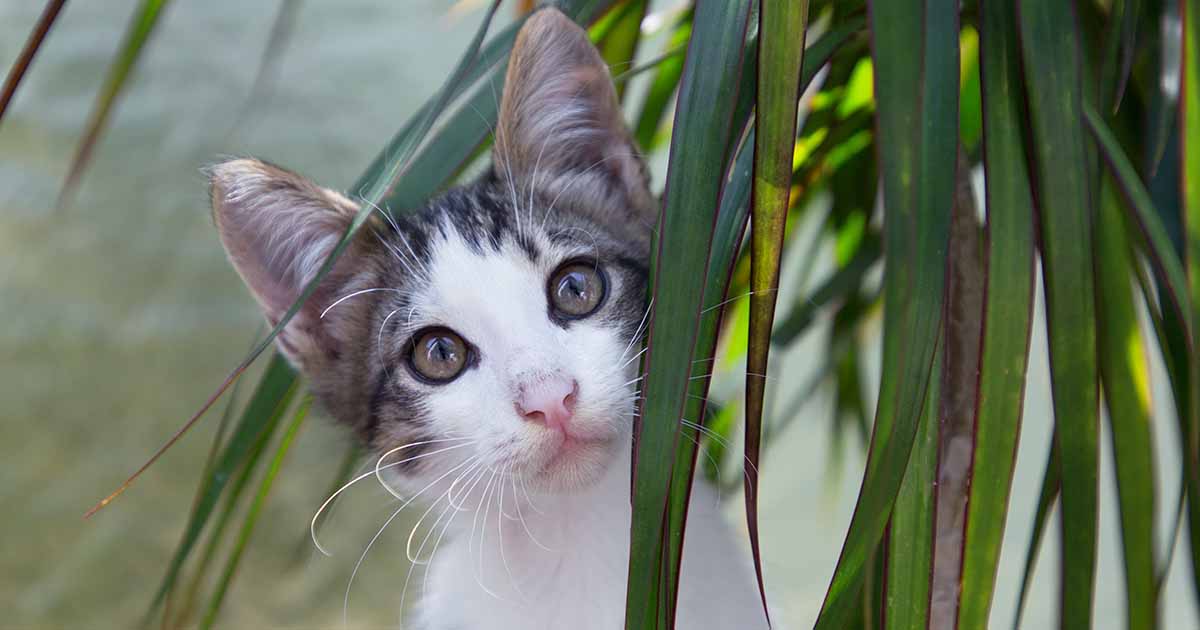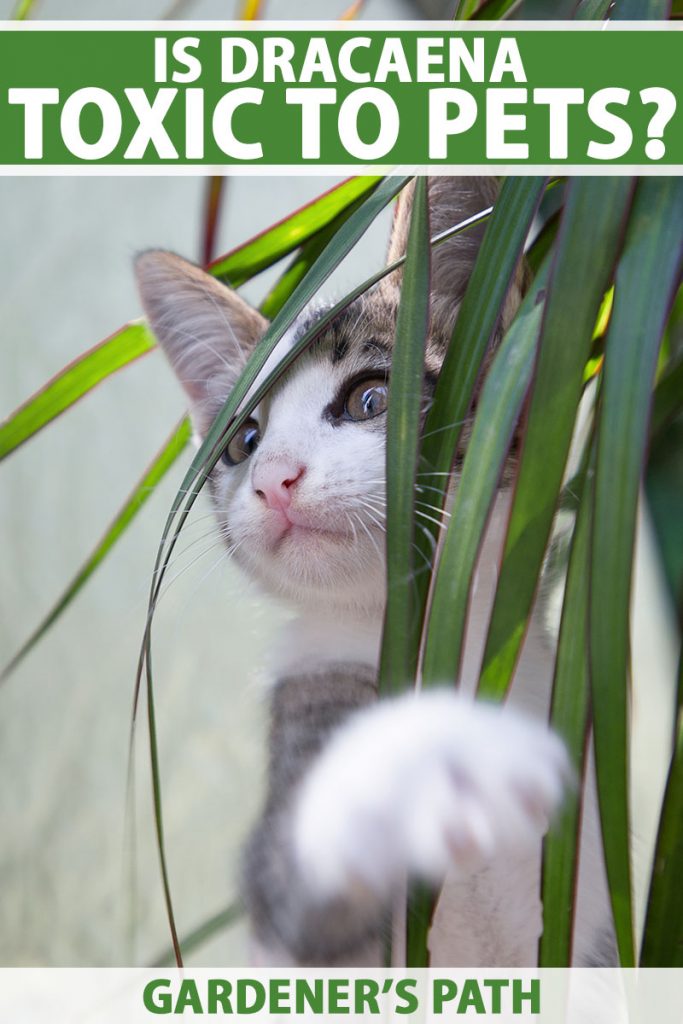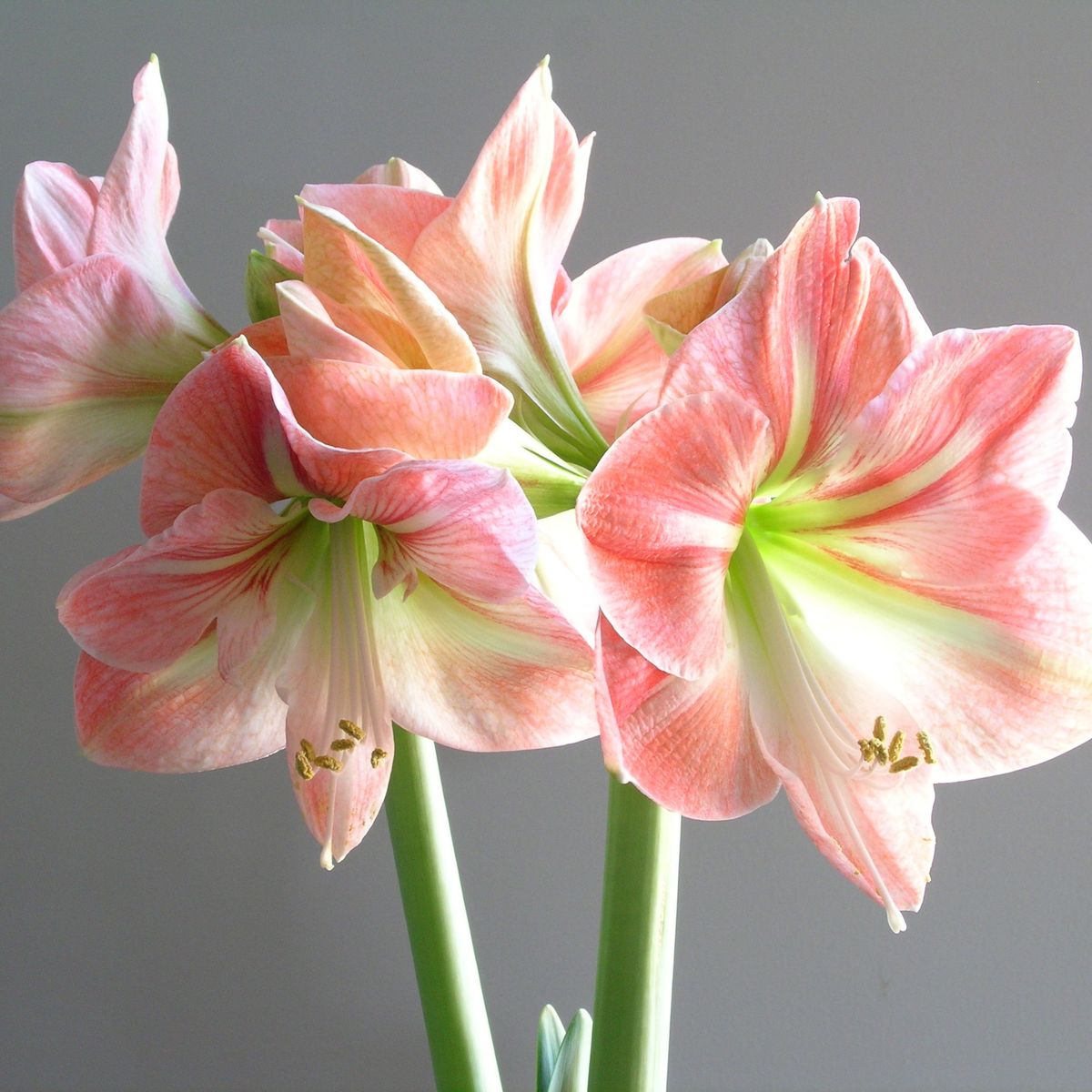The Dracaena genus includes many different species that are popular as houseplants.
But did you know that all of them can make your cat or dog sick if he or she ingests any part of the leaves, stems, bark, or roots?
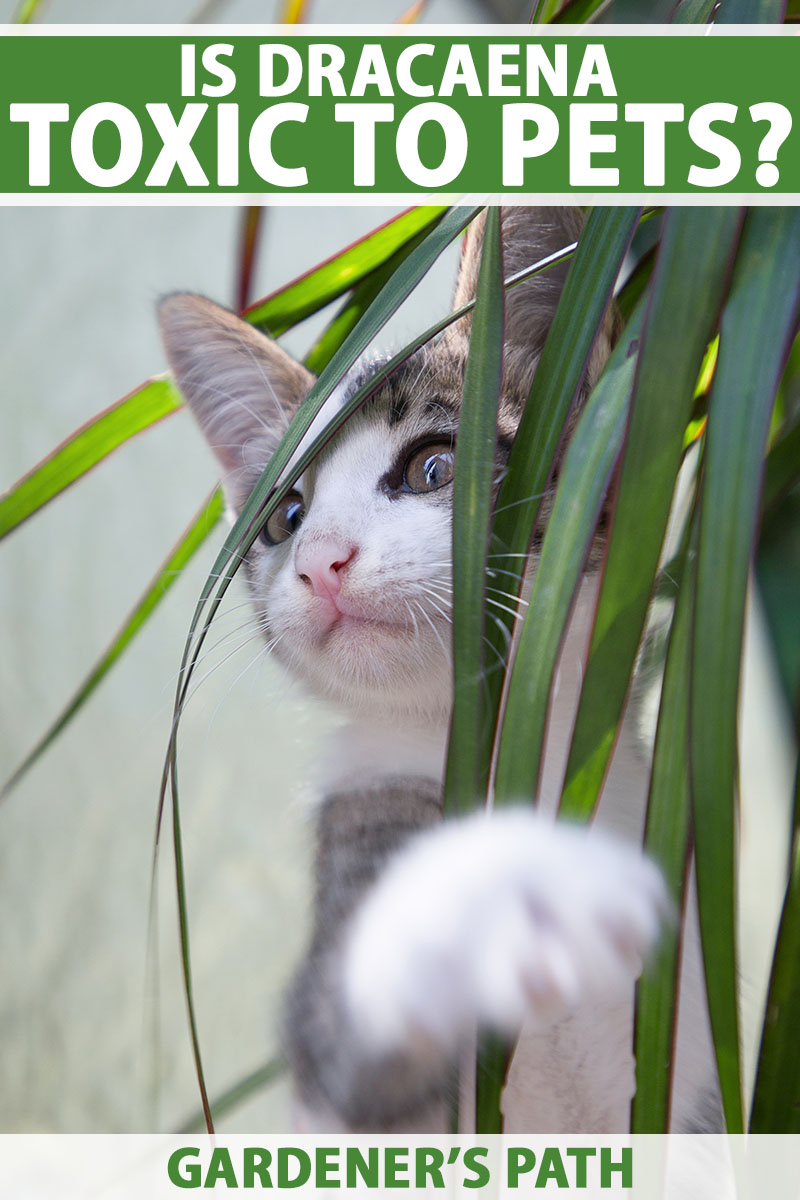
Fortunately, dracaena is not a highly toxic houseplant, and your pet’s odds of recovery after mild poisoning are very good.
However, all of the pet owners I know shudder at the thought of pussy or fido undergoing any suffering after they opted to make a meal of one of their houseplants.
As an added nuisance, this plant is even more tempting to cats than most, because it looks like grass.
And you know how cats and dogs love to graze on grass! Fortunately, their bitterness helps to serve as a deterrent.
In this guide, we will go over the symptoms and treatment for dracaena poisoning in your pets, and what exactly it is that makes these houseplants mildly toxic to your fur babies.
Saponins: When Soap is a Bad Thing
The guilty chemical that causes so much pain in animals is called a saponin.
That comes from the Latin word “sapon” meaning soap, and saponins foam when they are shaken with water.
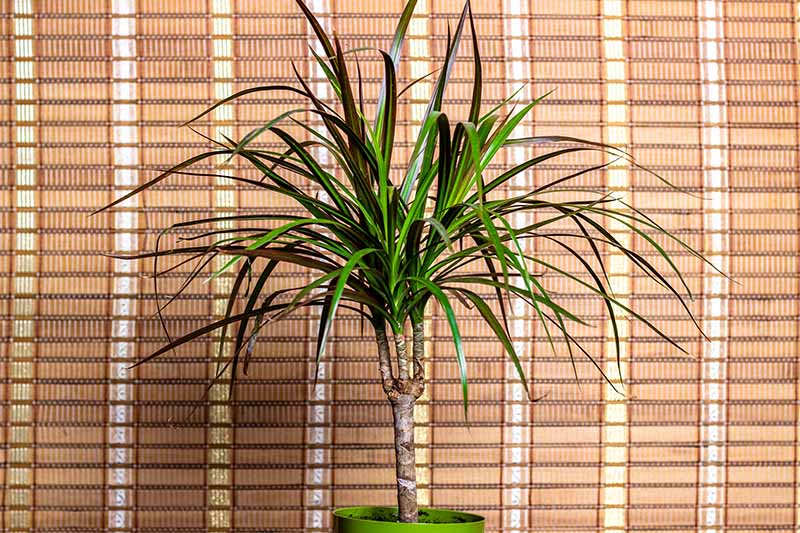
This has even led to the naming of D. mannii as the West African soap tree.
A number of different types of saponins have been isolated from plants in the Dracaena genus.
Different species of this genus can have different combinations of saponins.
These chemicals vary in their degree of toxicity. Some of them can cause animals to become extremely ill, while others have little effect.
Many of the dracaena saponins are steroids and contribute to the use of this plant as a form of traditional medicine in west Africa.
Some saponins are used industrially as detergents, and foam for fire extinguishers.
But eating them, well, that’s really not recommended.
Symptoms of Dracaena Poisoning in Pets
There is a good chance that your pet could be nibbling at your plants behind your back. (Shocking!)
If you notice bits missing, or you have reason to believe your pets have been making midnight snacks of the greenery in the corner, after taking the following steps it may be a good idea to reconsider which types of flora you choose to grow indoors, for the benefit of the animals.
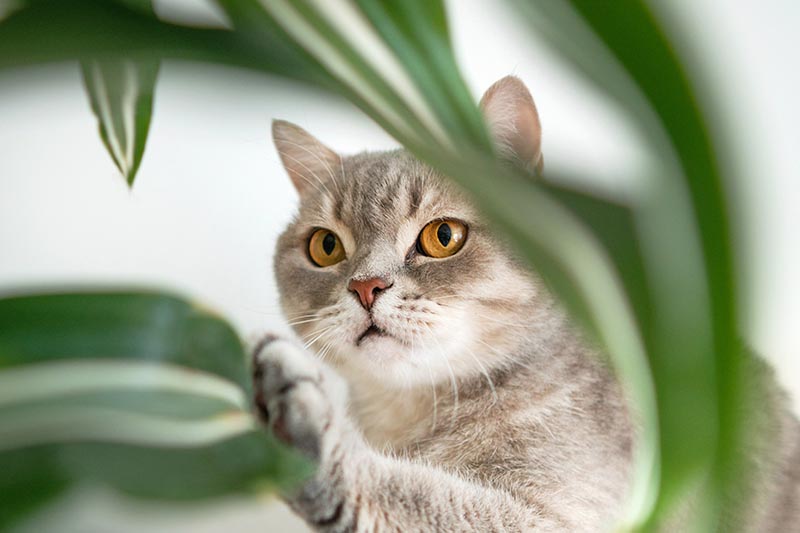
It is a huge help if you know what to look for if your pet has ingested a poisonous houseplant.
With dracaena, a mildly toxic plant, adverse symptoms after ingestion include:
- Abdominal pain
- Depression
- Diarrhea
- Dilated pupils (cats)
- Excessive drooling
- Fast heartbeat
- Incoordination
- Stumbling
- Vomiting
- Weakness
You should call your vet immediately if your pet has ingested dracaena.
If your cat or dog has one or more of these symptoms, there is a good chance that he or she will need emergency veterinary care.
It can take 12-24 hours for the symptoms to stop, and this could leave pussy or fido severely dehydrated and suffering from an electrolyte imbalance. Your vet can help to correct these issues.
Treatment
At this point, you are probably asking yourself, “What will she have to go through to get better?”
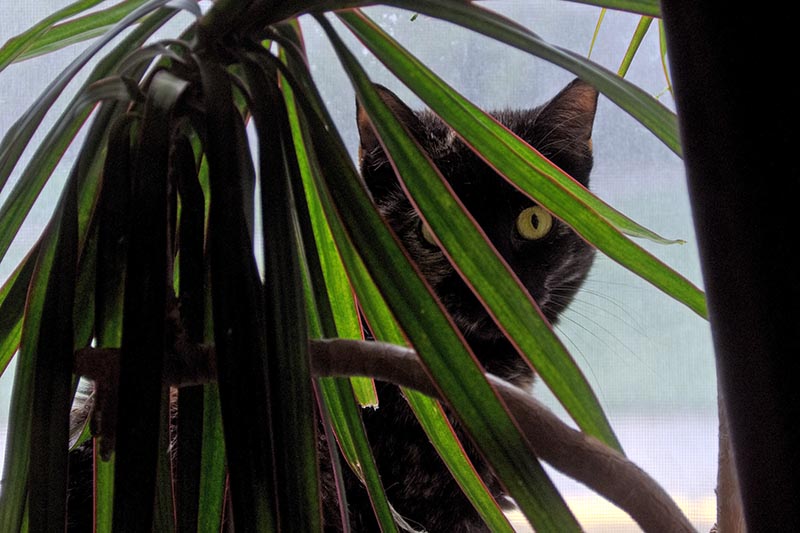
There are actually two answers to that question. The first has to do with the toxins in dracaena, and the other is about the plant itself.
Even if the plant didn’t contain any toxins, the leaves and stems would still irritate your pet’s stomach.
Intensive Fluids
If your pet has been vomiting for a lengthy period, she may have become dehydrated.
Severe dehydration can require hospitalization, so that she can be given electrolytes and intravenous fluids.
Induction of Vomiting
If your cat ingested dracaena leaves and is struggling to eliminate them, your vet can induce vomiting by administering hydrogen peroxide.
Recovery
Fortunately, no deaths have been reported after pets have eaten D. marginata, one of the commonly grown species of this plant.
With the help of your vet, your cat or dog should make a quick recovery within 24 hours of having eaten any dracaena parts.
The symptoms should stop as soon as all the plant materials (leaves or bark) have been eliminated, either orally or rectally.
Your Pet May Need Some Nurturing
You will probably want to nurture your pet after it has been through such an ordeal.
However, with some rest, he or she should make a full recovery.
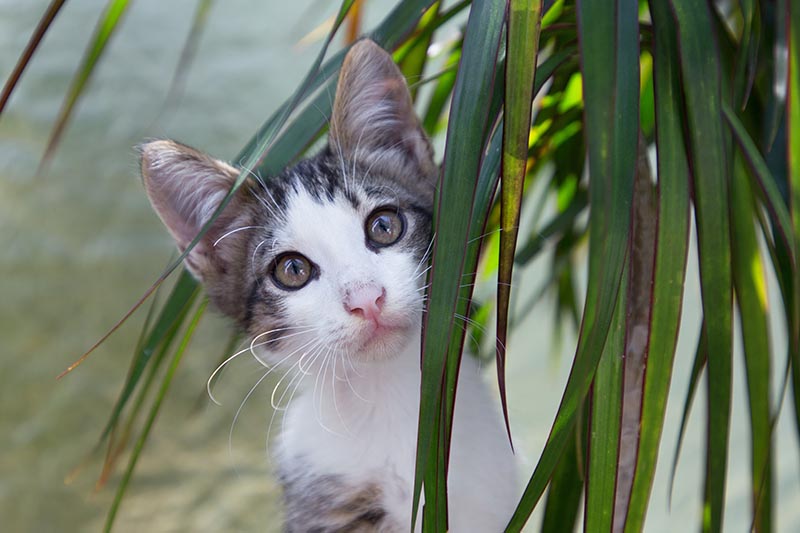
To be on the safe side, you should consider keeping your dracaena plant out of reach from now on.
Has your cat or dog nibbled on your dracaena? If so, let us know how he or she fared in the comments section below.
And for more information about growing houseplants, check out these guides next:
© Ask the Experts, LLC. ALL RIGHTS RESERVED. See our TOS for more details. Uncredited photos: Shutterstock. With additional writing and editing by Allison Sidhu.
The staff at Gardener’s Path are not medical or veterinary professionals and this article should not be construed as medical advice intended to assess, diagnose, prescribe, or promise cure. Gardener’s Path and Ask the Experts, LLC assume no liability for the use or misuse of the material presented above. Always consult with a veterinarian if your animals are displaying symptoms of toxicity.
About Helga George, PhD
One of Helga George’s greatest childhood joys was reading about rare and greenhouse plants that would not grow in Delaware. Now that she lives near Santa Barbara, California, she is delighted that many of these grow right outside! Fascinated by the childhood discovery that plants make chemicals to defend themselves, Helga embarked on further academic study and obtained two degrees, studying plant diseases as a plant pathology major. She holds a BS in agriculture from Cornell University, and an MS from the University of Massachusetts Amherst. Helga then returned to Cornell to obtain a PhD, studying one of the model systems of plant defense. She transitioned to full-time writing in 2009.

